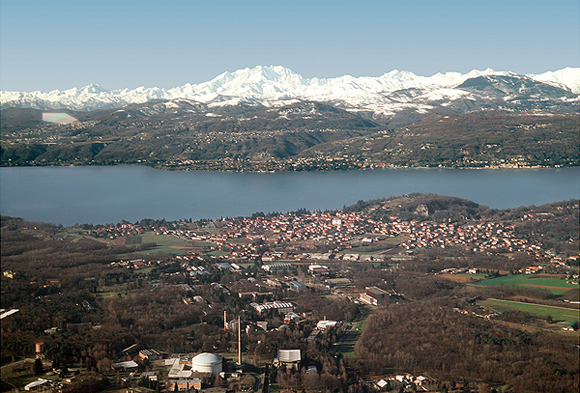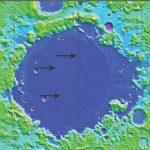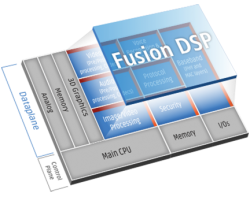During the last 10 years, the GNSS panorama has changed rapidly, bringing new pressure on product designers and system developers to adopt new approaches to their efforts. Let’s take a look at some of these changes.
In the consumer mass market, low-cost GPS terminals and car navigation systems are widely available, and their integration on “smart-phones” is mature.
During the last 10 years, the GNSS panorama has changed rapidly, bringing new pressure on product designers and system developers to adopt new approaches to their efforts. Let’s take a look at some of these changes.
In the consumer mass market, low-cost GPS terminals and car navigation systems are widely available, and their integration on “smart-phones” is mature.
For commercial and institutional applications, however, some issues are still on the table. In particular, institutional users are asking for GNSS solutions that offer high configurability, reliability, precision, service guarantees, authentication, security, and anti-jamming — and, by definition, the availability of open and standard solutions.
High-accuracy terminals or other GNSS equipment with demanding requirements are often based on proprietary and expensive solutions. At the same time, in some countries high-accuracy GNSS augmentation services are the exclusive initiatives of a single private provider or local public agency.
Meanwhile, standards and regulations are changing for almost every application. Therefore, in the near future a user terminal should be expected to support numerous standards and protocols. Furthermore, today’s technologically skilled GNSS user is always asking for more advanced solutions in terms of accuracy — just as evolving demands for mobile communications required ever more bandwidth.
Systems and services are converging. Information and communication technologies (ICT) are ever more frequently providing integrated hardware/software solutions for navigation and communications. Integration of GNSS with inertial sensors, communication systems (e.g., WiFi) and assisted (AGNSS) solutions are, of course, essential for providing higher continuity of service in a range of indoor situations.
In the near future, guaranteed and augmented solutions (in terms of precision and integrity) will be necessary not only for geodetic and surveying applications, but also for mass market applications such as advanced driver assistance systems (e.g., automatic lane keeping).
Backward compatibility with respect to legacy systems also has to be assured for a real exploitation of institutional market. An example of such an application is introduction of GNSS/RFID technology for implementing well-consolidated customs operational procedures and regulations. However, that application will require a complete and transparent integration of new freight “location” reporting systems within existing tracking systems.
Introducing a new “black box” system for this purpose (despite its efficiency), leading to a complete revolution for institutional freight tracking, will not be accepted by the institutional customer. Similar considerations appear in considering the application of innovative high-accuracy technologies in cadastral surveying operations.
The availability of new GNSS constellations and multi-frequency solutions (e.g., TCAR, three carrier ambiguity resolution) will change the scenario within a few years, leading to the need for quick front-end and firmware upgrades in GNSS receivers. New long-range real-time kinematic (RTK) solutions are also coming, based on innovative ionospheric modelling.
In this technological and business environment, embedded systems offer a near-future path to providing tightly integrated navigation and communication solutions with low-cost, accurate, portable, and highly reconfigurable receivers.
A concurrent technological advance, GNSS software receivers (referred to hereinafter as SDR, for software defined radio), will allow developers to provide code/phase solutions and the processing of signals from satellite-based augmentation systems (SBAS) and regional GNSS reference networks in an open environment.
Furthermore, through a suitably flexible front-end, adapting SDR solutions to emerging navigation constellations will be easily implemented. This approach seems like an ideal solution for institutional applications.
A side effect of the development of such solutions may be the ability to implement low-cost GNSS SDR-based augmentation networks, overcoming the usual problems related to high installation costs and the need for continual firmware upgrades.
This article will describe the activities of Sogei, in cooperation with the University of Tor Vergata in Rome, to develop an open SDR GNSS receiver for such applications.
Sogei R&D Activities
Sogei is an Italian company owned by the Ministry of Economy and Finance of Italy charged with developing ICT solutions for national institutions. Among other responsibilities, Sogei manages the Italian system for updating cadastral maps as well as the information system for Italian Customs.
. . .
Platform Architecture and Results
Development of Sogei’s GNSS SDR platform has been carried out using a popular simulation, modelling, and design software suite for rapid prototyping. Furthermore, we avoided any reliance on proprietary libraries and integrated our own C-code modules within the platform. Following this approach, our development platform is based on a bi-processor workstation, equipped with Windows OS, commercial software packages as well as free C compilers. Concerning hardware implementation and high performances, we are testing our code on an advanced DSP/FPGA SDR development platform.
. . .
Design, Developments Hints
Developing a GNSS SDR platform implies continuous design choices in order to find the best trade-off between performance and computational efficiency.
Concerning the acquisition phase, the bottleneck is, of course, the fast Fourier transform (FFT) calculation for implementing the parallel search. To achieve this goal, we developed and integrated an efficient FFT and inverse FFT algorithm into the platform.
. . .
GNSS SDR Results
The SDR platform performs nominally during the signal acquisition phase. After GNSS signal-in-space data acquisition and processing, the platform is able to carry out track signals from GPS, EGNOS, WAAS, and GIOVE-A. In the bottom graphs of the figure, note the two lateral autocorrelation peaks for GIOVE-A, as foreseen by the theoretical signal specifications for the binary offset carrier (BOC) signal modulation. Recently, we also performed GIOVE-B acquisition using our platform.
. . .
Future Perspectives
Worldwide, the implementation of a real-time GNSS SDR receiver is typically based on the integration of the code in a FPGA or DSP platform, and the subsequent implementation in dedicated chips (ASICs). Creating a truly open and reconfigurable solution for institutional applications, however, depends in such case on the use of such kind of devices. The integration of SDR within a commercial PDA or laptop is currently limited by the usual problems of power consumption and computational load problems.
. . .
Conclusions
GNSS civil and institutional applications will be of great relevance for future GNSS applications developments.
GNSS software receiver technologies offer the possibility to implement open and reconfigurable navigation and communication systems to be embedded in a PDA or Laptop. As a side benefit, low-cost terminals will be available for the user. Sogei R&D activities, in collaboration with the University of Rome “Tor Vergata”, allowed the possibility to implement an initial GNSS SDR platform able to work in a multiple constellation environment.
Meanwhile, the development of a network-RTK solution in the center of Italy, enabled users to achieve sub-decimeter accuracy with a reduced TTFA using complete standard protocols and interfaces. Modernized GPS and Galileo will allow the implementation of instantaneous and reliable high-accuracy services. RTK capabilities and TCAR processing within an open GNSS SDR environment could therefore provide a solution for future surveying and high-accuracy transport applications.
Acknowledgments
All the R&D activities described in the present paper have been developed within Sogei. A particular reference is here given to M. Torrisi and Andrea Properzi, working respectively on SDR development and GNSS network interfaces within the framework of the Masterspazio initiative of the University of Rome “Tor Vergata”.
For the complete story, including figures, graphs, and images, please download the PDF of the article, above.





